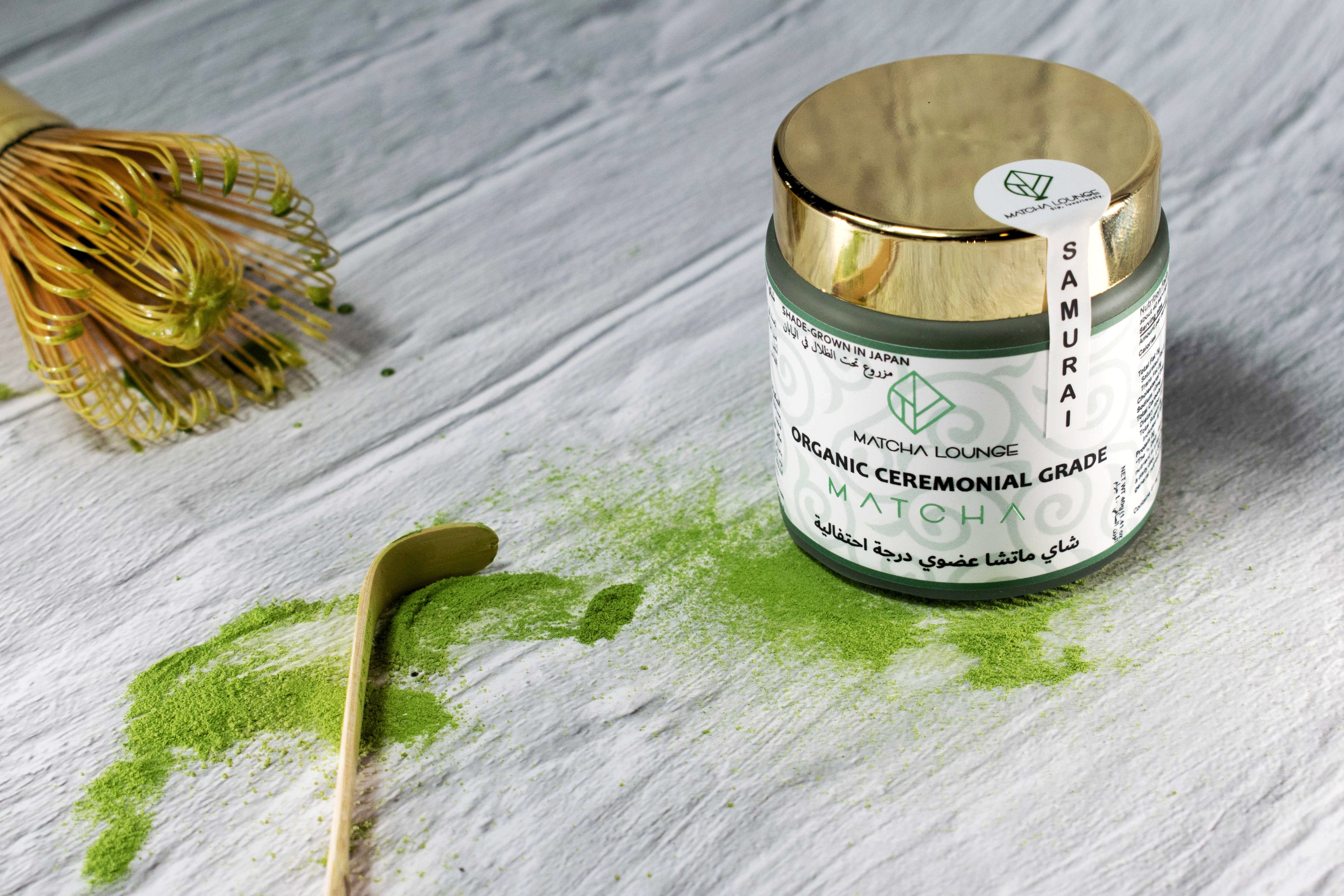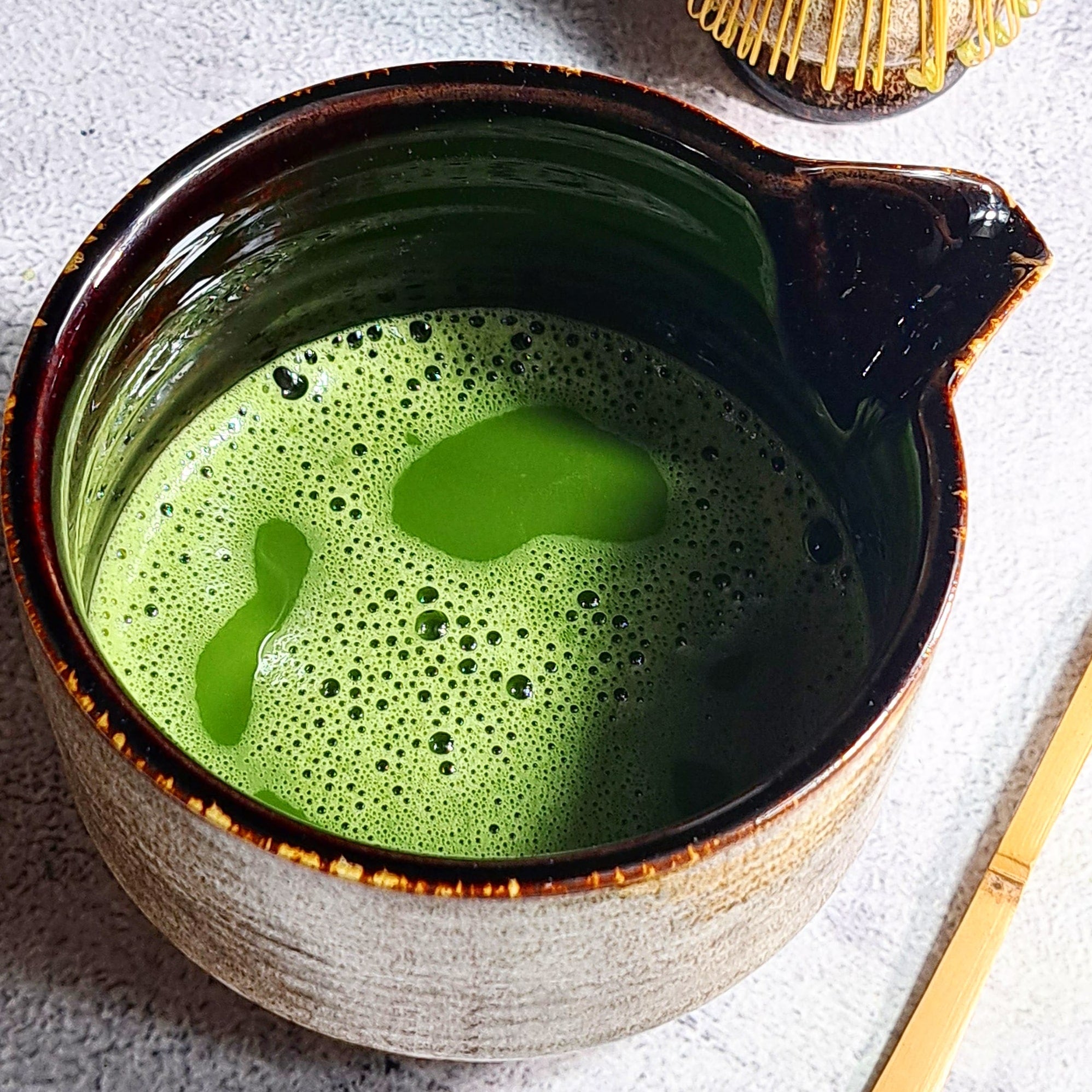
GET TO KNOW YOUR MATCHA
Matcha comes in three popular grades and each of these grades is best suited to a particular purpose.
Choosing the right Matcha boils down to how you are intending to use it.
Culinary grades of Matcha, including premium barista-grade should be used when mixing with food or beverages.
While ceremonial grade Matcha should be consumed as it is.
-

CEREMONIAL GRADE
Ceremonial-Grade Encha is ground from premium, first-harvest leaves, which are the most tender, plucked each spring from our farm in Uji, Japan. It’s best suited for the ceremonial style of drinking matcha, with water only. The taste is smooth, full-bodied, delicately grassy, and never bitter.
-

PREMIUM/LATTE GRADE
Latte-Grade matcha is ground from standard, high-quality, first-harvest leaves. When prepared just with hot water, latte-grade matcha can have a strong, slightly bitter taste. That extra strength makes it perfectly suited for pairing with milk or a milk substitute. Our premium, first harvest leaves offer a greener hue and a smoother latte, compared with matcha made with second- or third-harvest leaves and a perfect flavor profile for matcha lattes.
-

CULINARY GRADE
Culinary-Grade matcha is ground from premium, second-harvest leaves, plucked from our organic matcha farm. Culinary-Grade matcha offers a balanced palate, both vegetal and earthy, with a sweet, nutty finish. It’s perfect for cooking, baking, or adding to smoothies.
FAQs
What is matcha?
Matcha is a shade-grown, all-natural, powdered Japanese green tea. Unlike other teas, Matcha undergoes a number of additional steps in the production cycle, such as shade growing, hand picking and stone grinding, before it makes its way into your cup.
The distinctive, vibrant green color of our Matcha powder and its smooth, slightly sweet taste is a result of careful growing methods, where the leaves are kept shaded and protected from the sun.
How is it produced?
To make matcha, the youngest, finest leaves are plucked before undergoing a careful stone-grinding process to maintain their natural flavor. The veins and stems of the leaf are removed to give a very smooth texture in the final powder, which has a vibrant, bright green color and a naturally mild, sweet flavor.
How to prepare matcha tea?
Step 1:Add 1 scoop of matcha green tea powder to a matcha bowl or small bowl.
Step 2:Fill your kettle with fresh water and boil to 80°C.
Step 3:Pour a small amount of boiled water into the bowl (around 50ml).
Step 4:Using your matcha whisk, begin whisking in a "W" or "M" motion, until frothy.
Step 5:Pour from your matcha bowl into your mug or glass and top up with water or plant based milk.
To make a creamy drink try adding oat milk. If you like it sweet try adding a dash of rose syrup, which pairs beautifully with matcha. For a healthy treat, try adding matcha to: smoothies, lattes, desserts, yoghurts.
Which grade of matcha is best?
Matcha comes in three popular grades and each of these grades is best suited to a particular purpose:
- Ceremonial: best suited for the ceremonial style of drinking matcha, with water only. The taste is smooth, full-bodied, delicately grassy, and never bitter. This is known to be the highest quality.
- Premium or Latte: suited for pairing with milk or a milk substitute due to its strong earthy taste.
- Culinary: offers a balanced palate, both vegetal and earthy, with a sweet, nutty finish. Perfect for cooking and baking.
The different Matcha grades can be determined based on their time of harvest, affecting the eventual product in aspects ranging from color to taste to nutritional composition.
How do you know if matcha is high quality?
The rule is simple: the more finely ground the matcha powder, the higher its quality. A high-grade matcha is characterized by finely ground flecks. The diameter of a single fleck is estimated to be equal to the diameter of a pollen, which makes it so easy to blend with water. Plus, good quality Matcha is vibrantly green in color—often described as jade green—and lower qualities tend to have a more yellowish/brownish hue.
Can matcha help me lose weight?
Absolutely! Matcha green tea can be a fantastic addition to your diet if you are trying to lose weight. Thanks to its antioxidant and metabolism-boosting properties, it can help you achieve your weight loss goals in a flavorful and healthy way.
How do I store my matcha?
Cool, Dark, and Dry: The Ideal Storage Environment
Exposure to direct sunlight, heat, and moisture accelerates the breakdown of matcha's delicate compounds. To achieve optimal results, store your matcha jar away from sunlight, stovetops, kettles, or any sources of heat.
NOT storing your matcha properly won't make it go rancid or anything like that (there's no fat in it to rancify), but it will make it lose its its vibrancy, color, and taste. Keep it in a good container, and keep it cold!
Where do you source your ingredients?
We’re an Emirati company committed to environmental and social responsibility. We outsource our matcha from Japan and only work with suppliers who use sustainable organic growing practices, offer fair wages, and provide safe working conditions.
Does matcha expire?
Matcha does not expire, per se. Rather, matcha powder has a best-by date — after this 'best-by' period, your matcha may begin to lose its grassy, umami flavoring – becoming more bitter and often taking on a more yellowish, dull coloring.
Did you know?
Did you know the health benefits of matcha tea exceed those of green tea because when you drink matcha you ingest the whole leaf, not just the brewed water?

Want to win a matcha kit from Matcha Lounge?
Every month we giveaway a FREE starter matcha kit from Matcha Lounge. Enter your email below for a chance to win!



